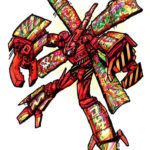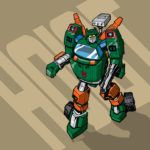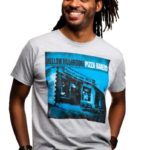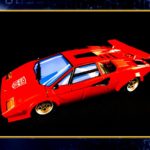Consider this list a matter of personal preference, there may be episodes that are more inventive, or better constructed, but these are the ones that keep me coming back time and again. For the next 8 blog entries I will control all that you see, with absolutely no impact on what you hear. You are about to experience the awe and mystery which reaches from the deepest inner mind to…the outer limits!
#8 Cry of Silence

Many will call me crazy, and that’s fine, but “Cry,” while trope-heavy, also features a deep story about isolation and communication, for every femme fatale scream June Havoc lets loose, there’s a corresponding original sci-fi idea, that, like much of The Outer Limits, will be seen again in coming years on TV and in movies. Sure, people are getting attacked by tumble weeds in the face, but there’s also a “descent into madness” subplot revolving around mysterious farmer Lamont.
#7 Soldier

Soldier is another Harlan Ellison tale, the primary episode which he claimed was ripped off to by James Cameron to create The Terminator (Ellison’s name now appears in the Terminators credits). A soldier from 1,000 years in the future is flung backwards in time along with a rival soldier who gets caught in transition. The title soldier is arrested and placed with a linguist; his futuristic lingo completely indecipherable. I won’t give it all away, but he reveals that in the future they send their orders through cats (not a typo).
#6 Controlled Experiment
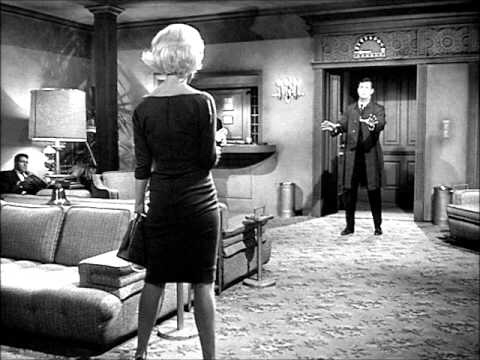
This episode is the biggest oddball in the whole series. The story revolves around two aliens who are trying to figure out the concept of “murder” (which doesn’t happen in their race), and the result packs more jokes in than any other Outer Limits episode. Carroll O’Connor is featured in an unmissable performance alongside the legendary Barry Morse. Star Trek’s Grace Lee Whitney (Janice Rand) also appears as the linchpin to this tale of time manipulation.
#5 Premonition
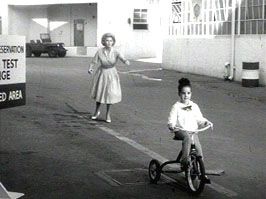
This episode will appeal to fans of The Twilight Zones “The Parallel,” a man pried from his timeline to become merely a viewer of the events around him. Dewey Martin and Mary Murphy are husband and wife, trying to escape a chronological limbo, but the stakes are high: Their daughter is in imminent danger, and if they don’t break free, they will be stuck between seconds forever. Also, they are not alone.
#4 Wolf 359
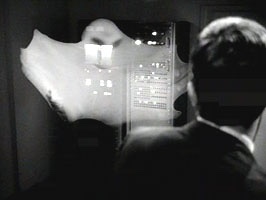
Yes, the monster is hokey, but, the idea of the miniaturized planet that evolves at a rate faster than ours is a premise we will see several times again in the decades to come. The atmosphere is sleepy and dreamy, even esoteric during a scene where Sara Shane’s character awakens at night to view a howling wolf in her front yard. In the 1990 Star Trek: The Next Generation two-parter “Best of Both Worlds,” “Wolf 359” is the name of the sector of space where the most pivotal battle between Starfleet and the techno-organic species The Borg occurred.
#3 The Duplicate Man

This is a psychological look at the effects of cloning, a relative of The Twilight Zones “In His Image,” though considerably more cosmic in its scope. Humans have reached the far ends of the galaxy, and due to one man’s ambition, the most dangerous, highly-evolved, alien predator ever discovered is loose on Earth. Henderson James is responsible for ending this peril before it dooms us all, but perhaps he isn’t best suited to destroy the predator, a clone with singular vision may be better equipped.
#2 Architects of Fear
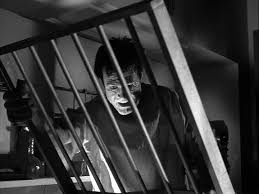
This episode is famous as one of the inspirations for The Watchmen, so much so that the live action film actually cuts to the Outer Limits opening at a crucial moment. What could bring the world together, well, it could only be something from out of this world. Does fear equal peace? Robert Culp crushes it as the slowly maddening Allen Leighton, the possible last hope for mankind.
#1 Demon With a Glass Hand
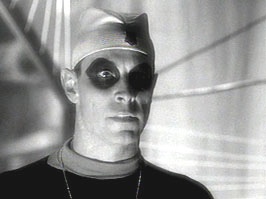
Famously, Harlan Ellison once claimed that The Terminator was based on two of his stories, Demon With a Glass Hand is clearly one (“Soldier” seemingly the other). Agents from the future are coming to present day to subvert the plans of the benevolent people of Earth. In the future, the agents have wiped out humanity, or rather, misplaced them. Robert Culp is our protagonist, with a robotic glass hand that everyone seems to want, because within it, lies the whereabouts of the rest of humanity, refugees from their own future.











